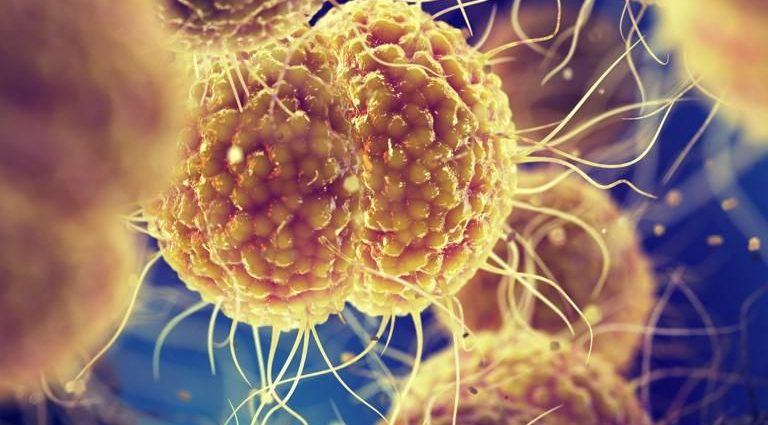THURSDAY, March 16, 2023 (HealthDay News) — Commonly known as the “clap,” gonorrhea is a sexually transmitted disease that can cause infertility in both women and men if left untreated.
The bad news is that cases are on the rise: According to the U.S. Centers for Disease Control and Prevention, some sexually transmitted diseases (STDs) are on a steady and steep climb. Gonorrhea, already the second most common STD in the United States, saw a 10% increase in prevalence in 2020 alone.
“The COVID-19 pandemic put enormous pressure on an already strained public health infrastructure,” Dr. Jonathan Mermin, director of CDC’s National Center for HIV, Viral Hepatitis, STD, and TB Prevention, said recently. “There were moments in 2020 when it felt like the world was standing still, but STDs weren’t. The unrelenting momentum of the STD epidemic continued even as STD prevention services were disrupted.”
The even worse news is that gonorrhea has developed antibiotic resistance, with recent research showing the bacteria is now resistant to numerous antibiotics in many parts of Africa. Doctors are down to one last effective class of antibiotics, cephalosporins, to treat a gonorrhea infection.
What is gonorrhea?
Gonorrhea is a bacteria that is spread through sexual contact, and sometimes through childbirth. The Mayo Clinic reports it most commonly affects the genitals, rectum and throat. In babies born to infected moms, it most commonly presents as an eye infection.
How do you get gonorrhea?
According to American Sexual Health Association (ASHA), gonorrhea is most commonly spread through vaginal, anal and oral sex. The ASHA recommends the correct and consistent use of condoms to help reduce the risk of gonorrhea transmission.
Is gonorrhea curable? The good news is it can be cured with antibiotics if caught early, but any damage caused by the infection cannot be reversed.
Gonorrhea symptoms
The symptoms of gonorrhea can vary, depending on the individual and the severity of the infection. According to the CDC, many people with gonorrhea have no symptoms or very mild symptoms that go unnoticed or are mistaken for another infection.
Importantly, women often don’t have obvious symptoms, while men typically do.
Dr. Elizabeth Asiago Reddy, an assistant professor of medicine with expertise in infectious diseases, said in a recent interview with Upstate Medical University in Syracuse, N.Y., that it is rare for women to see symptoms of gonorrhea. Therefore, most don’t know they have been infected and go untreated. Because of this, she stresses the importance of frequent testing for sexually active women.
However, according to the CDC, these are gonorrhea symptoms in women:
- White or yellow vaginal gonorrhea discharge that can be accompanied by a strong odor
- Pain or burning during urination
- Abdominal or pelvic pain
- Bleeding between periods
Untreated gonorrhea in women can lead to long-term and serious complications such as pelvic inflammatory disease (PID), which can cause infertility, chronic abdominal pain, and scarring of the uterus or fallopian tubes.
In contrast to women, Asiago Reddy said, men will almost always experience symptoms and usually seek testing right away.
The CDC says these are gonorrhea symptoms in men:
- Painful urination
- Discharge from the penis — usually white, yellow or green in color. It can be thick or thin
- Swollen or painful testicles
- Fever
In men, left untreated, gonorrhea can cause inflammation in the tubes leading to the testicles, causing infertility. The ASHA also reports inflammation of the prostate and scarring of the urethra as symptoms of untreated gonorrhea in men.
The CDC reports that both genders can experience rectal infections with symptoms of itching, bleeding, soreness, discharge and painful bowel movements.
According to the ASHA, in rare untreated cases, gonorrhea can spread to the blood and joints. This condition is called disseminated gonococcal infection and can be life-threatening.
Gonorrhea treatment
Antibiotics are the primary treatment for gonorrhea. It is important to complete the full course of antibiotics, even if symptoms disappear. According to the CDC, people with throat infections should be retested within one to two weeks. Retesting three months after treatment should be done to rule out reinfection, which is common.
Asiago Reddy noted that because of the bacteria’s growing resistance, two antibiotics are currently recommended as gonorrhea medication. One is given by injection and one is a pill. The CDC recommends several treatment options that include other antibiotics, depending on the location of the infection and whether or not the patient is allergic to the more commonly used ceftriaxone.
Copyright © 2024 HealthDay. All rights reserved.

